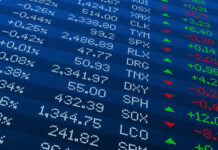Markets
Yesterday, the focus was on the US CPI. After recent repositioning, the market reaction was telling. First the data. They were close to expectations, with headline CPI at 0.4% M/M and 3.7% Y/Y (0.3% M/M). Core inflation eased to 0.3% M/M and 4.1% y/y (down from 4.3%). Post-payrolls, the market mostly reacted with a soft bias, after Fed comments (Logan, Vice Chair Jefferson) that recent rise in LT (real) yields caused a similar tightening equal to a (final) 25 bps Fed hike. However, post-CPI markets clearly aren’t convinced that this trick will work. The September inflation, while as expected, remains from the 2.0% inflation target. Looking through the baseline effects in the Y/Y measure, a 0.3-0.4% monthly dynamics only suggests that the battle hasn’t been won yet. Markets put the Longan-Jefferson assessment aside with yields starting quite an impressive ascent, the long end taking the lead. The bond sell-off even accelerated on a poor $ 20 bln 30-y Treasury auction. A the end of the day; USD yields added between 8.7 bps (2-y) and 16 bps (30-y). The US 10-y real yield also rebounded 10. 8 bps. In retrospect, the Fed communication on higher longer rates being a potential substitute for Fed rate hikes apparently isn’t that evident for markets to cope with. Maybe, the market concludes that it has more work to do (for the Fed). German yields followed at a distance rising between 7.6 bps (30-y) and 5.3 bps (2-y). The rebound in (real) US yields blocked the post-payrolls equity rebound. US indices after opening in green closed with losses of about 0.5%/0.6%. The dollar rebounded. DXY jumped from the 105.7 area to close at 106.6. USD/JPY nears the 150 barrier again (close 149.81). EUR/USD initially tested the 1.0635/43 resistance area, but was pushed back to close near 1.053.
This morning, Asian equities suffer from the higher US (real) yields annex WS correction yesterday. Chinese data and headlines on other measures from Chinese authorities to support markets don’t convince investors (Cf infra). US Treasures regain modest ground after yesterday’s sell-off. The dollar also cedes a few ticks (EUR/USD 1.0545). Later today, consumer confidence from the U. of Michigan (including inflation expectations data) is the only data series with market moving potential. Yesterday’s price action suggests that the bottom in core yields might be well protected going into the Fed November 01 policy meeting. For the US 10-y, a consolidation pattern between 4.50% and 4.9% might be developing. Giving lingering geopolitical tensions and the equity rally running into resistance, the dollar is again in pole position. The EUR/USD 1.0448 correction low might come on the radar again. Als keep an eye at the start of the US earnings season with several major banks reporting today.
News and views
Chinese inflation rose by 0.2% M/M in September, with the Y/Y-outcome flat compared to market expectations of a 0.2% Y/Y increase. Details showed consumer goods falling by 0.9% Y/Y while services inflation remained positive at 1.3% Y/Y. Food prices were the main drag, falling by 3.2% Y/Y. On a product level, household items (-0.4% Y/Y) and transport & communication (-1.3% Y/Y) showed falling price levels. The Chinese producer price index rose by 0.4% M/M, the most since April 2022. The Y/Y-reading turned less negative (-2.5% Y/Y from -3%) because of less-challenging base effects and higher oil prices. The Chinese trade surplus rose from $68.2bn in August to $77.71bn in September. The underlying picture isn’t a rosy one though with imports dropping 6.2% Y/Y (from -7.3% Y/Y) and pointing to weak domestic demand. Exports declined by 6.2% as well (from -8.8% Y/Y) which serves as proof for sluggish global growth. The Chinese yuan continue to trade on the weak side against the USD (USD/CNY 7.30). Chinese stock markets join the global trend, falling by 1-2% this morning, despite rumours that the country is considering a state-backed stabilization fund to shore up confidence in the stock market.
Argentina’s central bank raised its policy rate by 15 percentage points to 133%. National CPI data showed another acceleration for September (+12.7% M/M & +138.3% Y/Y). Off the record, they also attempt to prop up the Argentina peso which trades in the shadow market as weak as USD/ARS 1040 (“dollar blue rate) compared to official rate of USD/ARS 350. The currency is under even more pressure than usual in the run-up to October 22 elections with front-runner candidate Milei encouraging Argentines to stop savings in pesos as he wants to replace the national currency with US dollars (dollarization).













